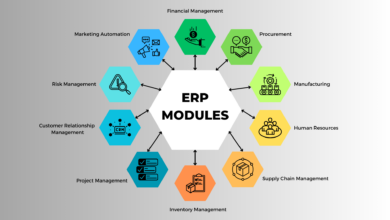E-commerce: The Unstoppable Force Revolutionizing Retail

In the dynamic world of commerce, e-commerce stands as a revolutionary force, transforming the way we shop and interact with businesses. From humble beginnings as a niche market, e-commerce has grown into a global phenomenon, redefining the retail landscape and shaping the future of commerce.
The Rise of E-commerce: A Digital Transformation
The emergence of e-commerce can be traced back to the early days of the internet, when pioneers envisioned a world where transactions could transcend physical boundaries. From the first online transactions in the 1990s to the ubiquitous presence of e-commerce today, the digital transformation has been remarkable.
The Driving Forces Behind E-commerce
Several factors have contributed to the explosive growth of e-commerce:
- Technological Advancements: The widespread adoption of the internet, advancements in mobile technology, and secure payment gateways have laid the foundation for e-commerce to thrive.
- Convenience and Accessibility: E-commerce offers unparalleled convenience, allowing consumers to shop from anywhere, anytime, using their preferred devices.
- Variety and Choice: E-commerce platforms provide access to a vast array of products and services from around the globe, expanding consumer choice and broadening market reach.
- Competitive Pricing and Deals: E-commerce often offers competitive pricing and attractive deals, enticing consumers to shop online.
The Impact of E-commerce on Retail
E-commerce has had a profound impact on the retail landscape:
- Shifting Consumer Behavior: E-commerce has reshaped consumer behavior, with online shopping becoming increasingly prevalent, influencing purchasing decisions, and altering the traditional retail experience.
- Brick-and-Mortar Adaptation: Traditional retailers have adapted to the e-commerce revolution, adopting omnichannel strategies that integrate physical stores with online platforms for a seamless customer experience.
- Emergence of New Business Models: E-commerce has given rise to innovative business models, such as direct-to-consumer (DTC) brands and subscription services, disrupting traditional retail structures.
Types of E-commerce Models
E-commerce encompasses a diverse range of business models:
- Business-to-Consumer (B2C): Businesses sell directly to individual consumers, such as online retailers and e-commerce platforms.
- Business-to-Business (B2B): Businesses sell to other businesses, such as manufacturers supplying raw materials to distributors.
- Consumer-to-Consumer (C2C): Consumers sell directly to other consumers, such as online auction platforms and peer-to-peer marketplaces.
- Consumer-to-Business (C2B): Consumers provide services or products to businesses, such as freelance marketplaces and online crowdsourcing platforms.
The Future of E-commerce: Innovation and Expansion
The future of e-commerce is poised for continued growth and innovation, driven by:
- Artificial Intelligence (AI) and Machine Learning (ML): AI and ML will enhance personalization, product recommendations, and customer service, improving the overall shopping experience.
- Augmented Reality (AR) and Virtual Reality (VR): AR and VR will transform product visualization, enable virtual try-ons, and immersive shopping experiences.
- Social Commerce: Social media platforms will increasingly integrate e-commerce capabilities, blurring the lines between social interaction and online shopping.
- Voice Commerce: Voice-activated assistants will play a more prominent role in e-commerce, allowing for hands-free shopping and seamless voice-based transactions.
Conclusion
E-commerce has revolutionized the way we shop, transforming the retail landscape and shaping the future of commerce. By embracing technological advancements, fostering innovation, and adapting to evolving consumer behavior, e-commerce will continue to redefine the way we interact with businesses and redefine the boundaries of retail.




